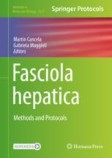Search
Search Results
-
Heterologous Expression of Candida Antifungal Target Genes in the Model Organism Saccharomyces cerevisiae
Understanding how a gene variant may influence antifungal resistance, or other phenotypic characteristics, is an important step in determining or...
-
Chemical-Genetic Approaches for Exploring Mode of Action of Antifungal Compounds in the Fungal Pathogen Candida albicans
Candida albicans is a prevalent fungal pathogen of humans that can cause both superficial and life-threatening disease, primarily in...
-
Characterizing Candida glabrata Pdr1, a Hyperactive Transcription Factor Involved in Azole Resistance
This chapter illustrates how to prepare isogenic strains carrying gain-of-function forms of transcription factor Pdr1 in the human pathogen Candida...
-
Drug Target Elucidation Through Isolation and Analysis of Drug-Resistant Mutants in Cryptococcus neoformans
Drug target identification is an essential component to antifungal drug development. Many methods, including large chemical library screening,...
-
Genome-Wide Identification of Variants Associated with Antifungal Drug Resistance
Genomic approaches are widely applied to study the genetic basis of antifungal drug resistance in clinical isolates and experimental studies....
-
Conditional Protein Depletion in the Analysis of Antifungal Drug Resistance in Candida glabrata
This chapter illustrates a method to generate Candida glabrata conditional depletion mutants for SNF2, an ATPase subunit of the SWI/SNF chromatin...
-
Using Bioluminescence to Image Candida glabrata Urinary Tract Infections in Mice
The human fungal pathogen Candida glabrata is less virulent compared to the most isolated Candida species including Candida albicans. Its reduced...
-
Analysis of Candida Antifungal Resistance Using Animal Infection Models
Candida frequently produces three general disease states, including mucosal candidiasis, disseminated candidiasis, and biofilm infection (which can...
-
A 384-Well Microtiter Plate Model for Candida Biofilm Formation and Its Application to High-Throughput Screening
Candidiasis, infections caused by Candida spp., represents one of the most common nosocomial infections afflicting an expanding number of compromised...
-
Transport Across Membranes: Techniques for Measuring Drug Import in Fungal Cells
The ability of many antifungal molecules to traverse the fungal cell wall and accumulate within the cell is crucial to its ability to have the...
-
Antifungal Susceptibility Testing and Drug Discovery in the Dimorphic Fungus Histoplasma Capsulatum
The thermal dimorphism of the fungal pathogen Histoplasma is linked to its virulence in mammalian hosts. Mammalian body temperature triggers...
-
Transport across Membranes: Techniques for Measuring Efflux in Fungal Cells
One of the most prevalent mechanisms of antifungal drug resistance is export of the molecule from the fungal cells through the action of putative...
-
Luciferase-Based High-Throughput Screen with Aspergillus fumigatus to Identify Antifungal Small Molecules
Only three classes of contemporary antifungal drugs are routinely utilized in the clinic against filamentous fungal pathogens such as Aspergillus...
-
Copy Number Variation and Allele Ratio Analysis in Candida albicans Using Whole Genome Sequencing Data
Whole genome sequencing of human fungal pathogens has revolutionized the speed and accuracy in which sequence variants that cause antifungal...
-
A Dual-Readout High-Throughput Screening Assay for Small Molecules Active Against Aspergillus Fumigatus
Human fungal infections caused by molds have been on the rise in recent years. These infections have high mortality rates compared to other fungal...
-
Protocols for Measuring Tolerant and Heteroresistant Drug Responses of Pathogenic Yeasts
The classic definition of antimicrobial susceptibility to antifungal drugs ignores the persistence of subpopulations that survive in the presence of...
-
Antifungal Susceptibility of Yeasts and Filamentous Fungi by CLSI Broth Microdilution Testing
Antifungal susceptibility testing is performed against yeasts and filamentous fungi (molds) for various purposes. In clinical settings, the results...
-
Zika Virus Isolation, Purification, and Titration
Zika virus (ZIKV) is an important pathogen transmitted to humans by the mosquito vector Aedes aegypti. ZIKV is able to infect several tissues and...
-
Use of Primary Human Fetal Astrocytes and Tissue Explants as Ex Vivo Models to Study Zika Virus Infection of the Develo** Brain
Zika virus (ZIKV) infection during pregnancy can result in congenital Zika syndrome which is characterized by microcephaly and other...
-
Liver Fluke Vaccine Assessment in Cattle
Liver fluke Fasciola hepatica remains an important agent of foodborne trematode disease producing great economic losses due to its negative effect on...
